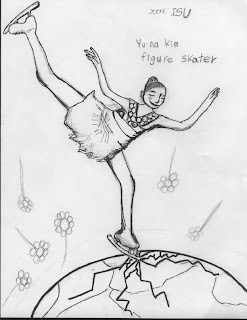
Tuesday, October 27, 2009
Tuesday, October 20, 2009
Tuesday, October 13, 2009
Monday, October 12, 2009
poptech
"Homaro Cantu"
Part mad scientist, part artist, chef Homaro Cantu pushes the traditional limits of known taste, texture and technique in a stunning futuristic fashion. With lab partner Ben Roche, Homaro slices and dices technology to reinvent the way people eat.
"Amos Lee "
Singer-songwriter Amos Lee’s rich, soulful vocals have been heard everywhere from “The Tonight Show” to “Grey’s Anatomy,” as well as on tour with Bob Dylan, Elvis Costello and Norah Jones. Listen in as he croons a four song medley that takes the Pop!Tech audience to another place.
"Jason Moran "
Many consider Jason Moran, 32, the foremost jazz pianist of his generation, with seven albums under the Blue Note label since 1999. Here’s a sample of how he experiments with new methods and ideas to cook up his own flavor of jazz.
Part mad scientist, part artist, chef Homaro Cantu pushes the traditional limits of known taste, texture and technique in a stunning futuristic fashion. With lab partner Ben Roche, Homaro slices and dices technology to reinvent the way people eat.
"Amos Lee "
Singer-songwriter Amos Lee’s rich, soulful vocals have been heard everywhere from “The Tonight Show” to “Grey’s Anatomy,” as well as on tour with Bob Dylan, Elvis Costello and Norah Jones. Listen in as he croons a four song medley that takes the Pop!Tech audience to another place.
"Jason Moran "
Many consider Jason Moran, 32, the foremost jazz pianist of his generation, with seven albums under the Blue Note label since 1999. Here’s a sample of how he experiments with new methods and ideas to cook up his own flavor of jazz.
ted talk
"Golan Levin makes art that looks back at you"
the computer reconiges the sound and the words would appear what the one says if it does not reconize it forms the similar shape of the alphabet. another amazing stuff was that the computer reconizes your eyes and records everymovements.
"Evan Grant: Making sound visible through cymatics"
cymatic is a visualized sound by vibrations. for example the dorphin language was discovered by the visualized sound.
"Scott McCloud on comics "
every cominc panels have space a relationship. with today's technalogy comics now can have a motion pictures.
the computer reconiges the sound and the words would appear what the one says if it does not reconize it forms the similar shape of the alphabet. another amazing stuff was that the computer reconizes your eyes and records everymovements.
"Evan Grant: Making sound visible through cymatics"
cymatic is a visualized sound by vibrations. for example the dorphin language was discovered by the visualized sound.
"Scott McCloud on comics "
every cominc panels have space a relationship. with today's technalogy comics now can have a motion pictures.
Wednesday, October 7, 2009
do the good design (till the last page)
“A well-crafted visual lie can be far more powerful than a lie built solely of words, because images provoke subconscious, visceral reactions. The imagery can be so subtle that people often don’t realized they are being manipulated.” There is a good example of how visual images are so powerful is “when peter simons returned to montreal from a trip, he had a problem on his hands. The new fall 2008 junior women’s fashion catalogue for his La Maison Simons clothing store was in his in-basket, and so were 300 messages from customers upset about too thin models being used to appeal to this audience most at risk for anorexia. … it took him 15minutes to decide that there would simply be no catalogue that season.” (p125)
The author says “no one understands the powerful mechanism behind these manipulations better than design professionals, and we have the creativity and persuasiveness to make a positive change.” (149) I agree with him and this book influenced me a lot his powerful points. The designer should think oneself,
1 I will be true to my profession
2 I will be true to myself
3 I will spend at least 10 percent of my professional time helping repair the world.
The author says “no one understands the powerful mechanism behind these manipulations better than design professionals, and we have the creativity and persuasiveness to make a positive change.” (149) I agree with him and this book influenced me a lot his powerful points. The designer should think oneself,
1 I will be true to my profession
2 I will be true to myself
3 I will spend at least 10 percent of my professional time helping repair the world.
Tuesday, October 6, 2009
Subscribe to:
Posts (Atom)





